10 Biggest Misconceptions About World War II In The Philippines
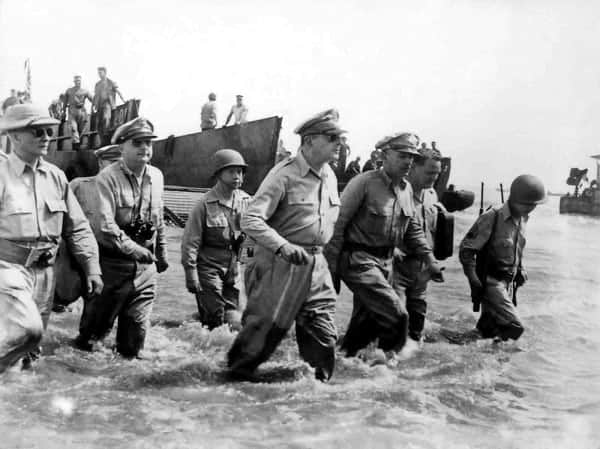
World War II was one of the largest and deadliest conflicts in human history, claiming the lives of millions and wreaking havoc on countries’ economies throughout the world.
Truly a “world war” in scope, virtually every country participated directly or indirectly in the war. For the Philippines, its own involvement came in the form of being occupied by the Japanese for three years.
Eager to grab the country’s natural resources, the Japanese drove out the Americans and became the new masters of the archipelago. Their reign—marked by numerous accounts of atrocities—alienated majority of the Filipinos who kept on fighting for their homeland right until the Americans came back to liberate the country.
Also Read: The WWII Japanese Soldier Who Hid in Philippine Jungle For 29 Years
According to the famous quote, the first victim of war is usually the truth, and with World War II here in our country, it’s no different. Over the years, many misconceptions have been made about certain facts, and thus it is only right to rectify them in order to set the record straight.
Note: This article in no way seeks to justify the unprovoked Japanese aggression and occupation of the Philippines but only seeks to give a clearer picture of what really happened during those dark and deplorable days.
1. Every Japanese treated our countrymen harshly.
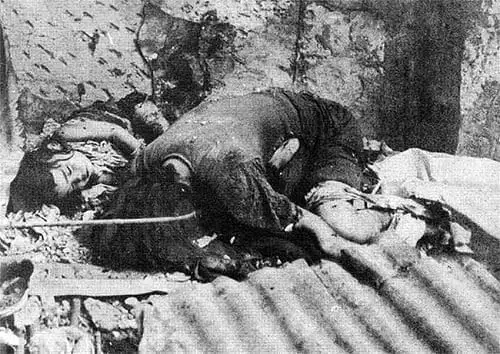
Probably the biggest reason why some Filipinos—especially those belonging to the older generation—still harbor feelings of hatred for the Japanese is because of the brutality they suffered under their rule. We don’t blame them; after all, it is well-documented that life was generally a living hell for those who lived under the Japanese.
READ: The WWII Japanese Officer Who Became An Unlikely Philippine Hero
Contrary to popular belief, however, not all the Japanese acted like savage barbarians. In fact, there were some who actually displayed kindness towards the people. Chief Justice Abad Santos had fond memories of a Christian Japanese Captain named Watanabe who not only treated him and his son kindly but even delivered his letter to his wife.
Also See: General Masaharu Homma was sentenced to death [VIDEO]
Japanese officers, especially those who knew how to speak English, and their men were quite well-behaved and would even try to befriend the local Filipino community. While it won’t erase the stigma of their compatriots’ brutality, it’s also equally wrong to classify every single Japanese as a mindless murderer.
2. They controlled the entire Philippines.
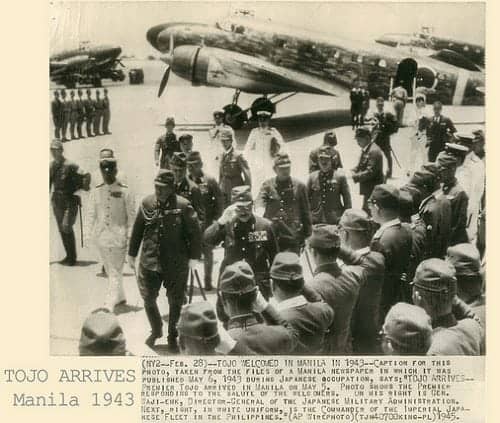
While the Japanese did wrest the country from the Americans, a highly effective guerrilla force prevented them from ever taking full control of the country.
In fact, the Japanese controlled as much as only 40 percent; all the rest belonged to different guerrilla groups. While the Japanese did control the major urban centers, they were in fact confined mostly to Luzon and Visayas, surrounded by the guerrillas who operated in the countryside and in the mountains.
Related Article: 11 Reasons Why President Jose P. Laurel Was A Total Badass
One guerrilla movement in Mindanao—the island farthest from the Japanese—even installed its own government which operated out in the open. These groups’ non-stop destabilization and surveillance campaign against the Japanese proved to be hugely successful and were invaluable to the eventual return of the Americans.
3. The guerrillas were a united front.
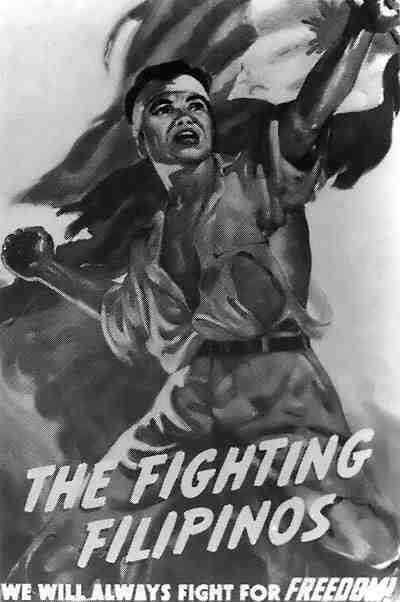
In a way, the different guerrilla groups were united primarily that they had to fight a common enemy. However, the cause for unity ends there as these groups hated each other almost as much as they hated the Japanese. In fact, they often fought each other either for territory and influence.
Also Read: The Filipina Leper Who Became A WWII Spy
The Huks, for instance, despised American-led guerrilla groups and would often engage them in battle. The Moros also clashed with Filipino and USAFFE guerrillas on a regular basis. So in actuality, the conflict in the Philippines looked less like a clear-cut duel between two people and more like a barroom brawl among drunken customers.
4. The guerrillas were composed of Filipinos and Americans only.
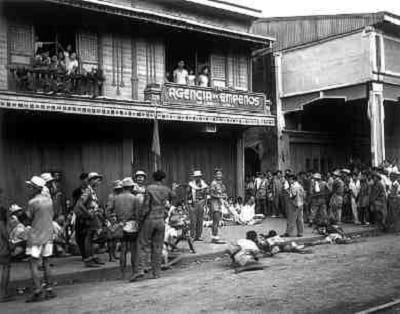
While we may think that only Filipinos and Americans fought as guerrillas against the Japanese, there was actually another nationality that fought them here too: the Chinese.
That’s right, the Chinese—being also on the receiving end of Japanese aggression during the war—formed their own guerrilla group against the invaders. Composed mainly of assimilated Chinese, the Philippine Chinese Anti-Japanese Guerrilla Force or “Wah Chi” operated in Central Luzon and often conducted lightning raids and liquidations against the Japanese and their collaborators.
Also Read: Claire Phillips – “Manila’s Mata Hari”
They also fought together with the Huk. In fact, Luis Taruc was said to have remarked that among the guerrilla groups, the Wah Chi “were among the most courageous and ferocious.” Speaking of ferocity…
5. The guerrillas fought a good, clean fight.
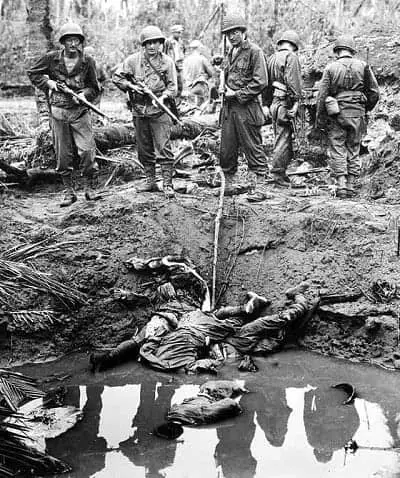
To think that only the Japanese were brutal is misleading since various accounts have shown how creatively cruel our guerrilla forefathers could be as well. That Filipinos are an innately gentle and hospitable people just goes to show how far the Japanese actually forced them into becoming cruel sadists as well.
Fulfilling the proverb of “violence begets violence” and driven by revenge, the Filipino guerrillas struck fear into the hearts of the invaders, mutilating and decapitating captured Japanese soldiers whenever they could. One Japanese officer in Mindanao related how they would go back to sleep on their ships at night for fear of being ambushed by Moro juramentados. When the Americans finally returned, their cigarettes were often bartered with by the guerrillas using the severed heads of Japanese soldiers.
Trivia: A statue of a Japanese kamikaze pilot was built in Pampanga
The guerrillas also often ignored American orders to treat captured enemy soldiers well, killing and decapitating them the moment they could lay their hands on them. Even the Americans themselves were frightened at the behavior and appearance of the guerrillas, some of whom vowed not to shave or cut their hair until they’ve wiped out the enemy.
Again, only by the sheer cruelty of the Japanese were the Filipinos forced to become cruel themselves.
6. The American liberation campaign was unstoppable.

Believe it or not, General Douglas MacArthur almost didn’t get to keep his promise of returning to the Philippines in 1944, and it’s all thanks to some very critical mistakes the Americans made during the decisive Battle of Leyte Gulf. Luckily for them though, the Japanese made far more mistakes.
At this point, the Japanese were getting desperate and banking on a last-ditch gambit to delay or even possibly defeat the overwhelming American forces poised to land on Leyte. To do this, they consolidated what was left of their once-mighty Navy and devised a plan wherein a sacrificial decoy force would lure away the American’s most powerful ships which were guarding the invasion force.
With those out of the way, the Japanese would then swoop in with their own ships and destroy the unguarded forces.
Heartbreaking Photo: Homeless Filipino children amid WWII wreckage (1945)
The plan, if it succeeded, would have slaughtered a countless number of American soldiers as well as set the liberation campaign schedule back by years. And it nearly worked too.
Taking the bait, the powerful main fleet led by Admiral William Halsey pursued the decoys and allowed the Japanese Navy led by Vice-Admiral Takeo Kurita to sail unopposed through the San Bernardino Strait right into the unguarded American forces off the coast of Samar.
Up against this overwhelming force of battleships which included the Yamato (the largest of its kind in the world) and heavy cruisers was a motley collection of American support ships which consisted of slow-moving escort carriers, transports, and small destroyer ships.
However, the Americans displayed ferocious fighting skills in their engagement, their outgunned ships going toe-to-toe with the powerful Japanese battleships. In fact, Kurita lost his nerve and sounded the retreat because he thought he had been fighting the main American fleet.
7. MacArthur made his “I Shall Return” speech here.
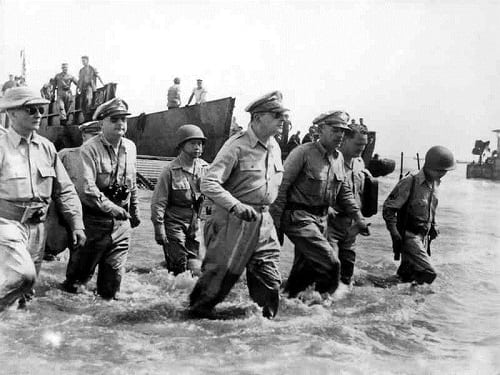
With all the legends surrounding MacArthur, it’s probably no wonder if many Filipinos still think he announced his famous promise here on the Philippine soil.
In reality, however, MacArthur uttered that line only after he had arrived in Terowie, South Australia with the rest of the evacuees from Corregidor. He also kept repeating that line in his subsequent speeches.
Trivia: General Douglas MacArthur served as Manila Hotel’s “General Manager”
Incidentally, his colleagues and officials at Washington thought MacArthur’s line was too personal and asked him to change it to “We shall return”, a request he ignored. Besides, his supporters countered, MacArthur took the war personally since he thought he had let the Filipino people down and wanted to make amends.
8. The Japanese completely surprised our forces when the war began.
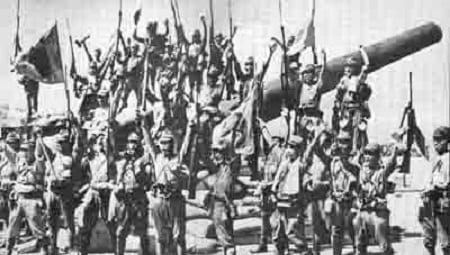
After the infamous attack on Pearl Harbor on December 7, 1941, we were taught that the Japanese quickly launched “surprise” air raids on several bases across the Philippines.
One raid at Clark Airfield—which would be known as our own version of Pearl Harbor—resulted in the destruction of virtually the entire arsenal of USAFFE airplanes. As a consequence, the Japanese achieved air superiority at the onset of their invasion of the country.
It was a complete tactical surprise, right? Not really.
Since the attack on Pearl Harbor, USAFFE forces in the country had already been put on the alert for the impending Japanese onslaught. In fact, General Lewis Brereton, commander of the Far East Air Force even proposed sending bomber planes to destroy Japanese air bases in Formosa (Taiwan) to pre-empt their raids when he heard the news about Pearl Harbor. He also recommended that the planes be kept off the ground in order to prevent their destruction by the Japanese.
Related Trivia: The first American hero of World War II was killed in combat in the Philippines
However, bureaucratic squabbling between him and MacArthur’s Chief-of-Staff General Sutherland prevented the planes from launching the operation in time, an incident which has come to be known as the “Far East Air Force Controversy.” One Japanese airman who took part in the first air raids even expressed his surprise when he saw the American planes “like sitting ducks” on the ground.
Without the much-needed planes, the Filipinos and Americans found themselves at a huge disadvantage against the Japanese.
9. The Death March was Japanese brutality at its worst.
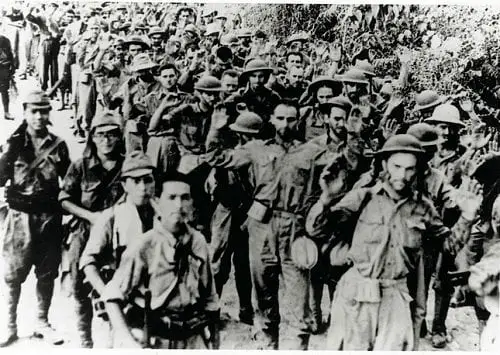
There is no question that the infamous Bataan Death March was one of Japan’s worst atrocities committed against the Filipinos and Americans. The 60-mile trek from Mariveles, Bataan in the south to Camp O’ Donnell in the north resulted in the deaths of tens of thousands of captured prisoners, many of whom succumbed to the grueling conditions of the march.
Curiously enough, many misconceptions have been attributed to such a well-documented event. For one, some prisoners described the long walk as relatively easy. According to them, their constant rest stops was the reason why the march lasted for at least three weeks.
And aside from the numerous accounts of Japanese cruelty, there were also stories of kind Japanese soldiers who helped out the prisoners, giving them water and allowing them ample time to rest. A few even allowed the weak ones to ride with them on their jeepneys or trucks. Unfortunately, acts of kindness like the aforementioned were the exceptions rather than the norm.
Also Read: Battle of Bataan (January 7 – April 9, 1942)
Another misconception is the view that surrendered personnel from Corregidor were transferred and forced to join the Death March. On the contrary, at the time of their surrender (May 6, 1942) the last of the Death March participants had already reached Camp O’ Donnell in Tarlac, their exodus having begun after the fall of Bataan on April 9. Instead, they were shipped to Manila and paraded on the streets as the Japanese wanted to show off their victory.
The Corregidor prisoners were also in far better shape (they enjoyed better rations) than their comrades who joined the Death March at the time of their surrender.
10. Every effect of Japanese Occupation was negative.

Was there ever a positive effect of Japanese rule of the Philippines?
While a decimated population, a destroyed economy, and a wrecked infrastructure would seem to negate that notion, there were indeed a few silver linings to be had during their occupation of the country. For one, Tagalog and not English became the national language. As a result, our culture experienced a sort of renaissance during those years especially when artists and writers re-discovered the beauty of indigenous arts and literature.
Related Article: Beautiful Old Manila Buildings Completely Destroyed By War
As we’ve mentioned before, the presence of a foreign invader also strengthened our national identity. Even if the guerrilla groups squabbled among themselves, they at least had the propensity to recognize the Japanese as a common enemy.
Lastly, the occupation showcased the positive qualities of Filipinos who not only had to be resilient but also be extremely creative to stay alive. Conclusively, the hardships of the war definitely strengthened the Filipinos’ indomitable will to survive
References
Cultural Bridge Productions, (n.d.). Amerikanitos, life during the japanese occupation of the philippines. [online] Available at: http://goo.gl/TJFzLX [Accessed 28 Oct. 2014].
Flores, W. (2012). Let us not forget Filipinos & Chinese fought together for freedom. [online] philSTAR.com. Available at: http://goo.gl/xXPNds [Accessed 28 Oct. 2014].
Gordon, R. (n.d.). Bataan, Corregidor, and the Death March: In Retrospect. [online] Battling Bastards of Bataan. Available at: http://goo.gl/Dxr2UK [Accessed 28 Oct. 2014].
Official Gazette of the Republic of the Philippines, (n.d.). The execution of Jose Abad Santos. [online] Available at: http://goo.gl/yFYmYE [Accessed 28 Oct. 2014].
Additional Sources:
Inside the Bataan Death March: Defeat, Travail and Memory By Kevin C. Murphy
Senso: The Japanese Remember The Pacific War: Letters To The Editor of Asahi Shimbun Edited By Frank Gibney And Translated By Beth Cary
In Our Image: America’s Empire in the Philippines By Stanley Karnow
The Edge Of Terror: The Heroic Story Of American Families Trapped In Japanese-Occupied Philippine By Scott Walker
Lapham’s Raiders: Guerrillas In The Philippines, 1942-1945 By Robert Lapham, Bernard Norling
The Young Draftee By Monte Howell
Combat Infantry: A Soldier’s Story By Donald E. Anderson
Battles That Changed History: An Encyclopedia of World Conflict By Spencer Tucker
Pain and Purpose In The Pacific By Richard Carl Bright
Treaty Cruisers: The World’s First International Warship Building Competition By Leo Marriott
The Soldiers’ Wall: A Glimpse Into Their World By Lyris Mitchell
The Most Dangerous Man In America By Mark Perry
The Filipino Moving Onward By Rosario Sagmit, Ma. Lourdes Sagmit- Mendoza, Ampara Sunga
US Commanders Of World War II (1): Army And USAAF By James Arnold, Robert Hargis
1942: The Year That Tried Men’s Souls By Winston Groom
FilipiKnow
FilipiKnow strives to ensure each article published on this website is as accurate and reliable as possible. We invite you, our reader, to take part in our mission to provide free, high-quality information for every Juan. If you think this article needs improvement, or if you have suggestions on how we can better achieve our goals, let us know by sending a message to admin at filipiknow dot net
Copyright Notice
All materials contained on this site are protected by the Republic of the Philippines copyright law and may not be reproduced, distributed, transmitted, displayed, published, or broadcast without the prior written permission of filipiknow.net or in the case of third party materials, the owner of that content. You may not alter or remove any trademark, copyright, or other notice from copies of the content. Be warned that we have already reported and helped terminate several websites and YouTube channels for blatantly stealing our content. If you wish to use filipiknow.net content for commercial purposes, such as for content syndication, etc., please contact us at legal(at)filipiknow(dot)net